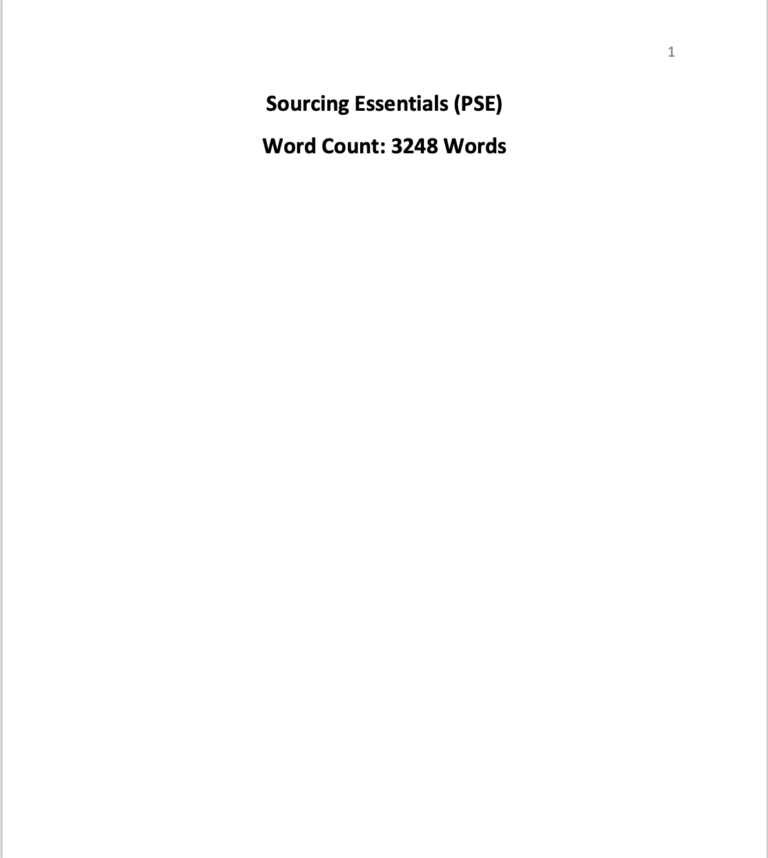Description
Solution
SECTION 2
1.4 Data Analysis
To calculate the percentage turnover for each department, I used the formula:
Turnover Percentage= (Total Employees/Leavers) ×100
2020
- Administration: 4/22×100=18.2%
- Maintenance: 5/9×100=55.6%
- Marketing: 0/4×100=0%
- Production: 70/231×100=30.3%
- People Team: 1/6×100=16.7%
- Research & Design: 1/4×100=25%
- Sales: 19/42×100=45.2%
- Packing & Dispatch: 21/36×100=58.3%
- Finance: 2/5×100=40%
2021
- Administration: 8/20×100=40%
- Maintenance: 3/8×100=37.5%
- Marketing: 0/4×100=0%
- Production: 3/2198×100=16.2%
- People Team: 0/6×100=0%
- Research & Design: 0/3×100=0%
- Sales: 3/35×100=8.6%
- Packing & Despatch: 6/15×100=40%
- Finance: 0/4×100=0%
2022
- Administration: 9/20×100=45%
- Maintenance: 3/8×100=37.5%
- Marketing: 1/4×100=25%
- Production: 3/8178×100=21.3%
- People Team: 3/6×100=50%
- Research & Design: 0/4×100=0%
- Sales: 0/40×100=0%
- Packing & Despatch: 8/16×100=50%
- Finance: 0/4×100=0%
2023
- Administration: 2/18×100=11.1%
- Maintenance: 1/7×100=14.3%
- Marketing: 0/4×100=0%
- Production: 29/181×100=16%
- People Team: 2/5×100=40%
- Research & Design: 1/4×100=25%
- Sales: 2/45×100=4.4%
- Packing & Despatch: 3/15×100=20%
- Finance: 0/3×100=0%
To calculate the overall turnover rate for the entire organization each year, we sum the total number of leavers and total employees, then apply the turnover formula:
Overall Turnover Percentage= (Total Employees/Total Leavers) ×100
2020:
- Total employees = 359
- Total leavers = 123
- Turnover: 123359×100=34.3%
2021:
- Total employees = 285
- Total leavers = 52
- Turnover: 52285×100=18.2%
2022:
- Total employees = 275
- Total leavers = 62
- Turnover: 62275×100=22.5%
2023:
- Total employees = 282
- Total leavers = 40
- Turnover: 40282×100=14.2%
Data Presentation
- Bar Graph-The following is the Bar Graph presenting the year-wise Turnover percentages of each department (2020-2023). It has a graphical display of the turnover rates by department making it less time consuming to determine departments with high or little turnover in the previous years.
Please click the following icon to access this assessment in full
Related Papers
(Solution) CIPS ADNOC APGSS impact of market changes on the supply chain
(Solution) 5C003 range of formal or informal development activities and add these to your CPD Plan/document (AC 3.3)
(Solution) 7CO03 Learning Plan Curiosity and passion for deep learning
(Solution) 5CO03 human and business benefits of people feeling included, valued, and fairly treated
(Solution) CIPS Sourcing Essentials Assessment
- In this assessment, sourcing approaches have been identified and holistically reviewed. This is in line with RCU organisation IT spend category. This is further compared with payment services, document management category which is office suppliers and postal services.
- For evaluating the identified spend categories, various tools have been selected which are Kraljic Analysis Tool, Mendelow’s Analysis Tool for Stakeholder analysis and the Maslow Hierarchy of needs.
- Further, by using the SWOT analysis, the internal and external factors of the sourcing have been selected. A further analysis by use of Peter Block Grid’s has been applied to evaluate the interests of stakeholders to source appropriate position.
- The findings indicate that RCU adopts the best sourcing approach based on their needs.
- Finally, by using Carter’s 10Cs model, the best practice for pursuing suppliers appraisal has been provided for IT spend category.
(Solution) Negotiation Plan Red Sea Global Practitioner Corporate Award Assignment- PIN
This final assignment is integrated and intend to develop a formal negotiation plan for an organisation Procurement and Supply Management (PS&M).
The areas of focus include driving value through procurement and supply, managing expenditure, contracts development, sourcing essentials, and negotiation in PS&M.
The organisation of focus is Red Sea Global (RSG) Organisation a luxury, sustainability and innovation convergence for redefining development process. This is by focusing on the Cost Estimation Service (CES) spend category which are instrumental for RSG active practices.
In order to obtain appropriate findings in this negotiation plan, various tools including STEEPLE, Porter’s 5 Forces, SWOT analysis and Mendelow Matrix Stakeholders have been embrace for development of a negotiation plan. This is guided by the view that RSG as a development sector organisation has their priority on improving cost management efficiency and success in coming up with new developments and tourism models.
With the tourism sector slowly recovering from POST-COVID pandemic negative implication by economic slowdown, financial resources in RSG PS&M and negotiations have reduced. As such, the existing resources for RSG are not much. Therefore, the value for money outcomes in the negotiation strategy is supposed to be put into consideration.
For RCG, this is the rationale of coming up with a detailed negotiation plan for success in PS&M operations. The negotiation plan is in alignment with various sourcing approaches, terms and conditions and varying expectations.
The key findings indicate the best practice include use of different content in development of a negotiation plan. The steps followed have been identified to include preparation, test, propose, bargain, agree and close.
The key findings also highlight the essential of involving all organisation stakeholders as part of the negotiation. This is with stakeholders relationships being essential.
Another key finding is that for success in the negotiation process, leverage on BATNA and MLA is essential to obtain relevant findings.
From the findings and also conclusions obtained, various recommendations can be generated.
The recommendations inclue nee to initiate sufficient planning to involve all the stakeholders while at the same time holistically investing in technologies and managing conflicts of interest.
Another recommendation include need to customise negotiation strategy informed by market environment factors.



